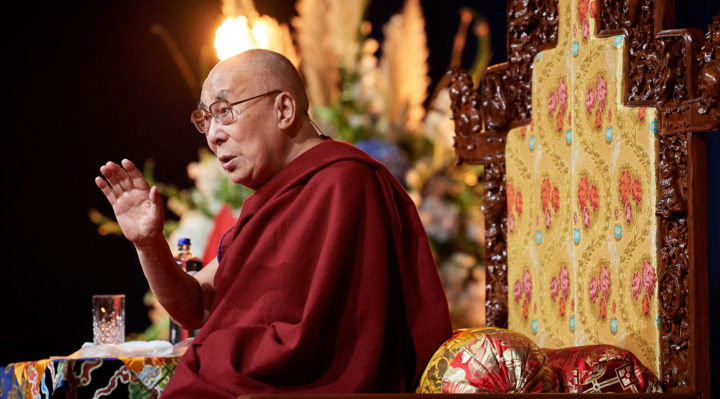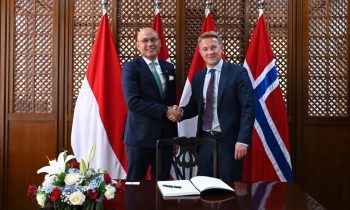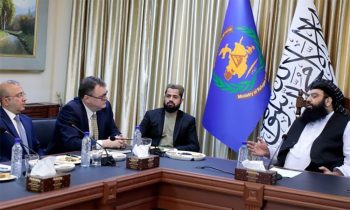Tibet’s self-declared government-in-exile marked the 25th anniversary of the disappearance of a boy named as Tibetan Buddhism’s second highest figure by calling on China to account for his whereabouts. The Tibetan parliament, the Kashag, said the boy named the 11th Panchen Lama who was taken away at age 6 along with his family in 1995 continued to be recognised as the sole legitimate holder of his title.

“China’s abduction of the Panchen Lama and forcible denial of his religious identity and right to practice in his monastery is not only a violation of religious freedom but also a gross violation of human rights,” the Kashag statement said. “If China’s claim that Tibetans in Tibet enjoy religious freedom is to be considered true, then China must provide verifiable information on the well-being and whereabouts of the 11th Panchen Lama along with others”, the statement said.
The statement also said that “China’s abduction of the Panchen Lama and forcible denial of his religious identity and right to practice in his monastery is not only a violation of religious freedom but also a gross violation of human rights.” The continued non-appearance of Gedhun Choekyi Nyima, the legitimately recognized Eleventh Panchen Lama, clearly shows China’s intentions vis-à-vis Tibet and its efforts to control the reincarnation of prominent Lamas, including the Dalai Lama.
The 14th Dalai Lama had recognized a young Tibetan boy, Gedhun Choekyi Nyima as the 11th Panchen Lama in 1995, the second highest spiritual authority in Tibetan Buddhism after Dalai Lama. Days later, Choekyi Nyima disappeared, becoming the world’s youngest political prisoner. The Dalai Lama, named the Eleventh Panchen, with the help of Tibetan lamas trained in reading portents and signs. China, on the other hand claims the reincarnate can only be chosen by pulling lots from a golden urn, a method it used to pick its own candidate under strict control of the officially atheistic ruling Communist Party.
China, which claims Tibet as its own territory, named another boy, Gyaltsen Norbu (officially known by China as Lama Bainqen Erdini Qoigyijabu), to the position. He is believed to live under close government control in mainland China and is rarely seen in public. Norbu was confirmed and approved by the Chinese State Council, as the reincarnate of the Tenth Panchen Lama on 29 November 1995 after the lot drawing from a sacred golden urn in strict compliance with religious rituals and conventions. The Chinese Panchen was born on 13 February 1990 at Lhari County in northern Tibet. His father and mother both had primary school education.
US Statement on Panchen
Meanwhile, the United States also urged China to release the 11th Panchen Lama, who was taken into captivity at the age of six by Chinese authorities. Sam Brownback, US Ambassador-at-large for International Religious Freedom made media comments during a video conference call with reporters (14 May 2020) about the Panchen Lama saying, the world did not have any idea of his whereabouts, even as the US continued to press China to release the Panchen Lama. Brownback while responding to a question, said the release of the Panchen Lama had increased relevance in the light of China’s continued assertion that it had the right to appoint the next Dalai Lama, which Beijing had no right to do.
In 1996, a year after the 11th Panchen went missing China had admitted that it was holding the Tibetan child, Gendun Choekyi Nyima, regarded by most Tibetans as the 11th reincarnation of the Panchen Lama. The UN had at that stage asked that a delegation be allowed to visit the seven-year old boy, whom Beijing said was being held to prevent him from being kidnapped by Tibetan nationalists.
Meanwhile, the United States Commission on International Religious Freedom (USCIRF), in a statement, reiterated its call for the US State Department to fill the vacancy for the Special Coordinator for Tibetan Issues. The appointment of the Special Coordinator for Tibetan Issues is mandated by the Tibetan Policy Act of 2002 however, this position has been vacant since 20 January 2017.
Previous special coordinators have been crucial to raising the profile of religious freedom issues in Tibet and mobilizing government resources to address the issue, it said. USCIRF Commissioner Gary Bauer claimed that the Communist Party of China was attempting to erase the unique identity of Tibetan Buddhism. “We need to utilize all of the policy tools available, including the position of Special Coordinator for Tibetan Issues, to confront this grave threat to religious freedom”, he said.
Panchen Lama’s Role
Traditionally, the Panchen Lama has served as teacher and aide to the Dalai Lama, Tibetan Buddhism’s highest leader who is now 84 and is accused by China of seeking independence for Tibet. Beijing claims Tibet has been part of China for centuries, but many Tibetans say they were largely independent for most of that time. The Dalai and Panchen Lamas were supreme figures of spiritual authority in Tibet (as well as of the Gelug tradition) and enjoy a reverence among Tibetans that transcends the plurality of regional and sectarian affiliations. They were linked by, among other things, a unique authority in the selection and tutelage of each other’s successive reincarnations. The breakdown of this special relationship in the early 20th century was used by China’s Communist Party, to intervene in and take control of Tibet’s political affairs.
Traditionally, the Dalai Lama has been involved in recognising the Panchen Lama, and similarly, the Panchen Lama is part of the process by which each new Dalai Lama is chosen. That is precisely why China as far back as 1995, figured that it made sense to have its own candidate as the Panchen Lama. Its’ plans for a post-Dalai Lama world were set in motion way back then, and with the endorsement of its own Panchen Lama, China wanted to choose a successor to the current Dalai Lama and seek to control him. Hence, it is believed to be keeping another young man, who was the Dalai Lama’s choice as Panchen Lama, incommunicado in an unknown location. China fears that Tibetan exiles will appoint their own Dalai Lama and it does not want any authoritative Tibetan figure to show him support. Both China and the exiles have recently been stepping up preparations for a coming dispute.
Interestingly, in August 2018, the Chinese-appointed Panchen Lama, Norbu held a worshipping ceremony at Lhamo Lhatso lake in Gyaca County, Shannan Prefecture of Tibet Autonomous Region. This was the first visit by the Chinese Panchen Lama to Lhamo Lhatso, a sacred lake. During the worshipping ceremony (18 August 2018) a blessed bottle was planted in the middle of the lake.
Lhatso lake is famous for the visions that a Regent or a High Lama can have in it. For example, signs can be ‘seen’ and indications can be gathered to discover a new Dalai Lama. It was the case when Regent Reting Rinpoche went to the lake in 1935 and had several visions; he saw the roofs of the house of the young 14th Dalai Lama who had just been reborn in a remote village of Amdo province (now Qinghai). Two years before this, Gyaltsen Norbu visited another sacred lake, the Rinbung Yamtso in Dekyiling area of Rinbung County (Shigatse). As one authority on Tibet aptly wrote that “there is no doubt that China is preparing for the rebirth of the present Dalai Lama”.
In April 2020, the Dalai Lama, while responding to a question that: “I hope the official Panchen Lama studies quite well under the guidance of a good teacher. When I recognised Panchen Lama sometime ago, there was no news about him. But according to reliable information, he is still alive and carrying normal education”. If that indeed be the case, then the 31 year old Panchen Lama has every right to be free. Will China please produce the real Panchen Lama, for the world to see?



